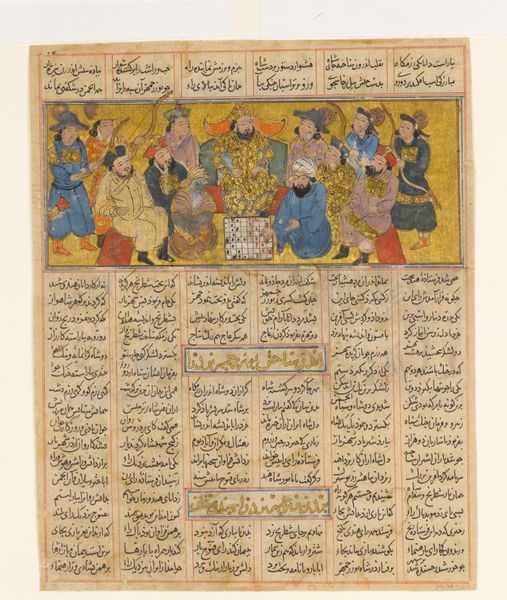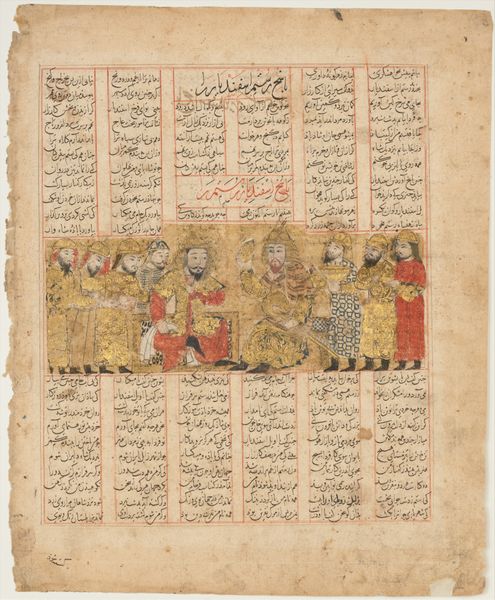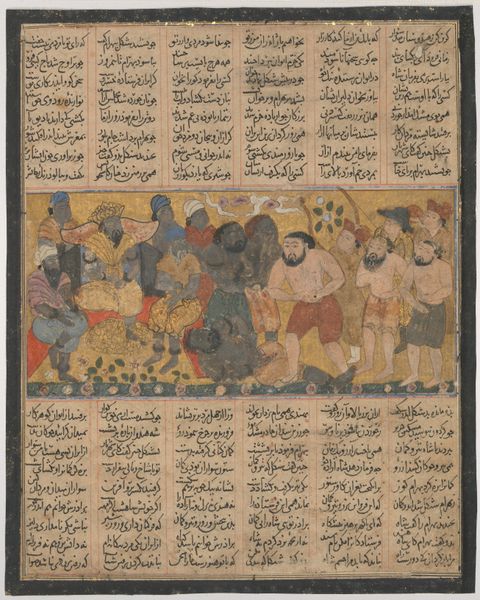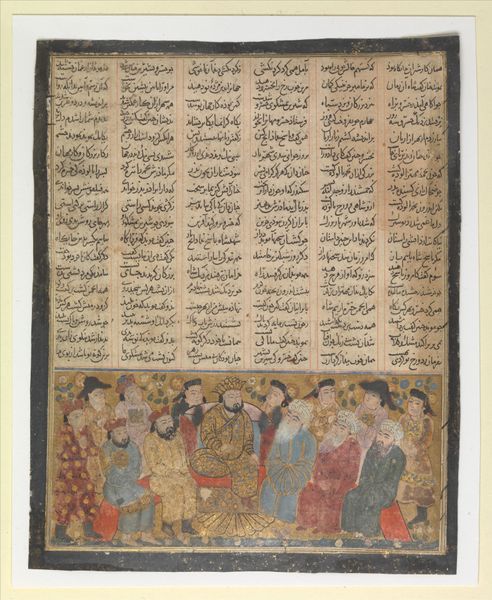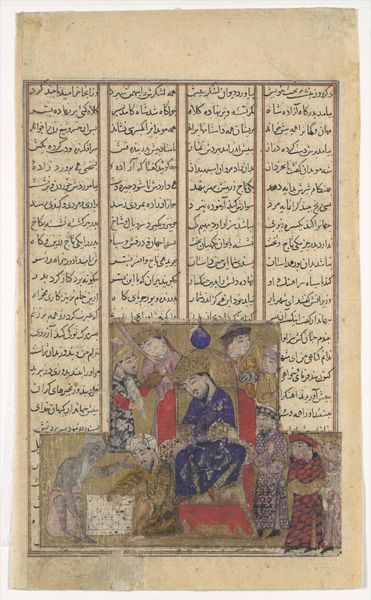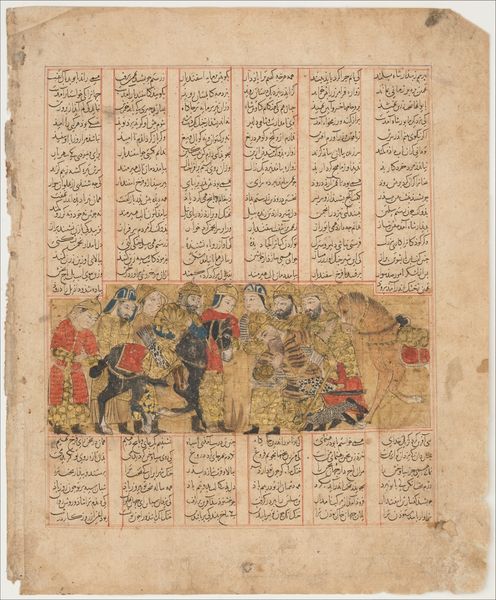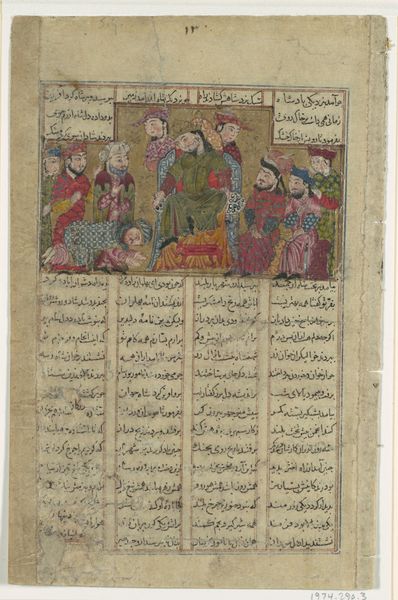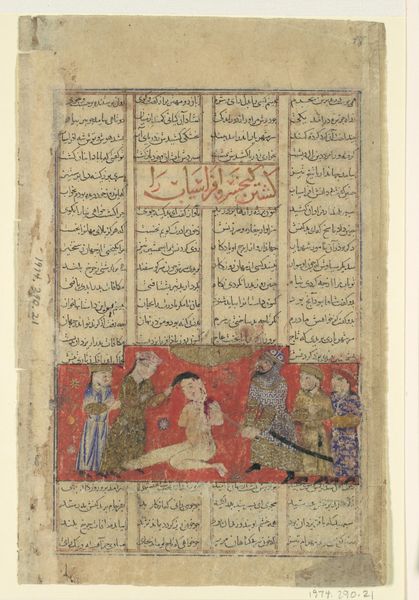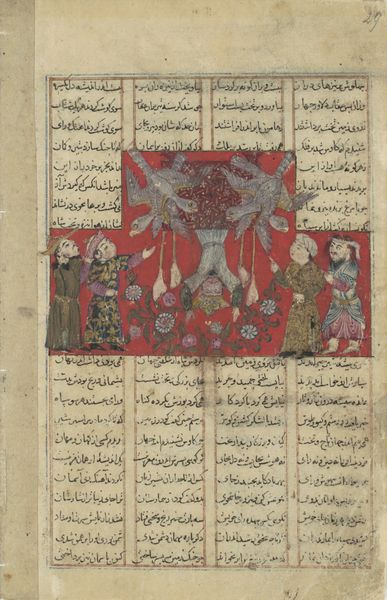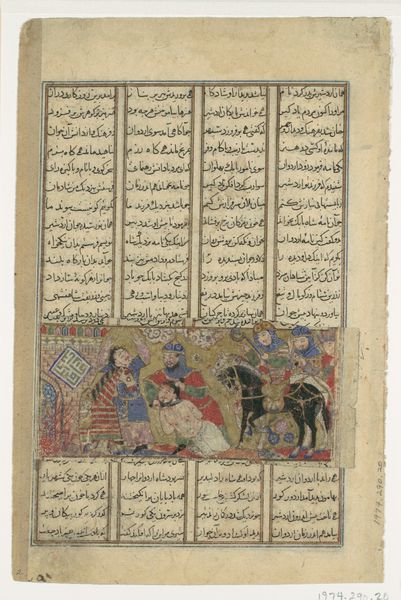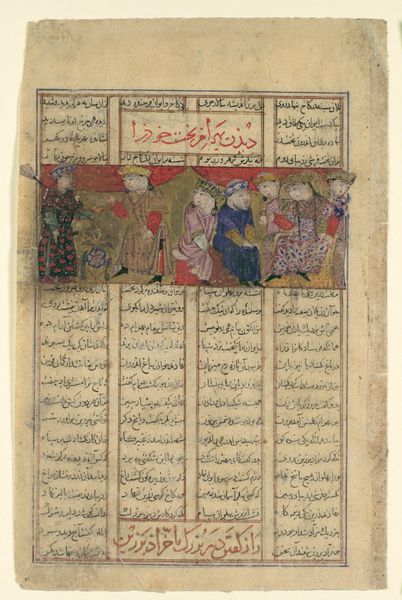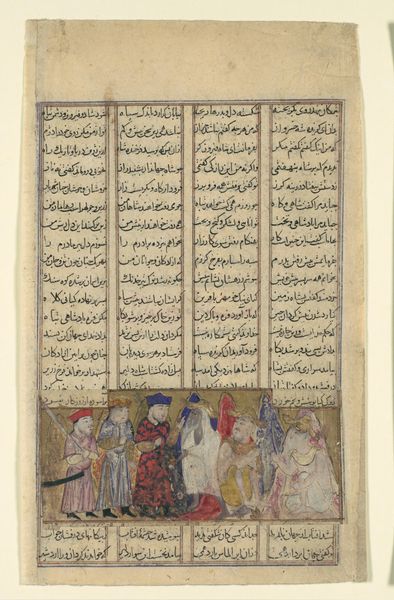
"Nushirvan Receives Mihras, Envoy of Caesar", Folio from the First Small Shahnama (Book of Kings) 1275 - 1355
0:00
0:00
painting
#
narrative-art
#
painting
#
figuration
#
islamic-art
#
miniature
Dimensions: Painting with Textblock: H. 6 9/16 in. (16.7 cm) W. 5 3/8 in. (13.7 cm) Page: H. 8 1/4 in. (21 cm) W. 7 1/8 in. (18.1 cm) Mat: H. 19 1/4 in. (48.9 cm) W. 14 1/4 in. (36.2 cm)
Copyright: Public Domain
Crafted during the early 11th century, this folio from the First Small Shahnama, attributed to Abu'l Qasim Firdausi, presents Nushirvan receiving Mihras, an envoy of Caesar. The dominant visual symbols here are those of royal reception and diplomatic exchange, central to the legitimization of power in the Persian cultural context. The enthroned king and the presentation of gifts are potent indicators of authority and the acceptance of tribute. Consider the motif of the 'enthroned ruler', a symbol found across diverse cultures—from the pharaohs of Egypt to emperors in China. This image evokes not just power, but also justice and order. In a psychoanalytic sense, the figure of the king seated on his throne is a projection of the collective desire for stability and authority. The act of offering gifts as tribute resonates with similar scenes found on ancient Greek vases or Roman reliefs. Over time, this gesture evolves, yet its core message remains consistent: submission, respect, and the negotiation of power dynamics. This transference echoes across time, tapping into our collective subconscious understanding of hierarchical structures and the emotional charge they carry. This symbol has resurfaced, evolved, and taken on new meanings in different historical contexts.
Comments
No comments
Be the first to comment and join the conversation on the ultimate creative platform.
